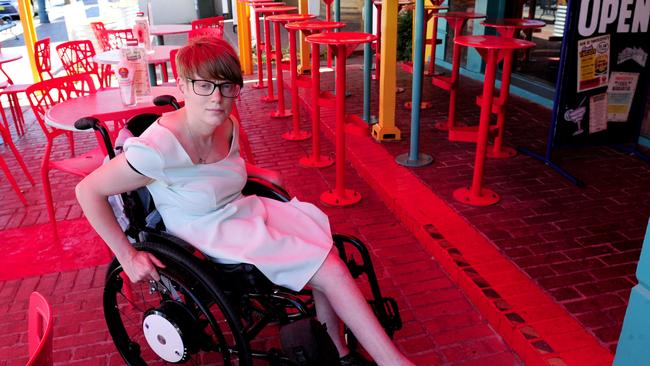The 10 worst spots for disability access in Adelaide
UPPER house MP Kelly Vincent took reporter Anthony Templeton on a tour of the 10 least accessible spots in the city– and what they found may surprise you.
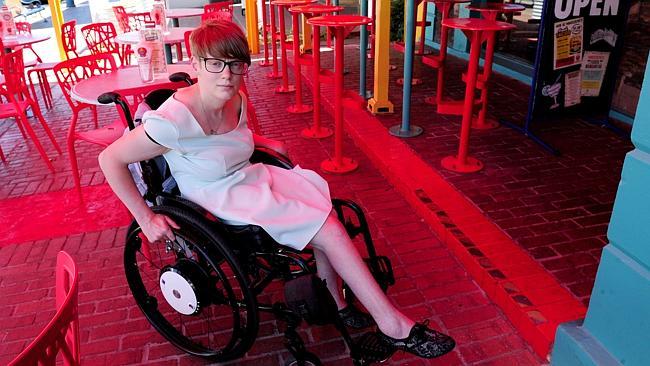
SA News
Don't miss out on the headlines from SA News. Followed categories will be added to My News.
A physical disadvantage adds an unenviable degree of difficulty to everyday life. Impediments seem to appear at every turn, especially in the city. From dangerous, uneven surfaces, to inaccessible buildings, communication systems out of reach and transport difficulties, Dignity for Disability MLC Kelly Vincent takes ANTHONY TEMPLETON on a tour of the 10 least accessible spots in the city and North Adelaide – and what they found may surprise you.
1. CITY SOUTH TRAM STOP
Too narrow to allow the tram’s fold-out ramp to be used and no wheelchair access on to the platform for the road. The tram stop requires widening to ensure people using a wheelchair or mobility device can use it safely.
“It is very narrow and, because of that, the ramp can’t be used. It is impossible to use the City South tram stop without assistance,” Miss Vincent said. “The tram stop needs to be widened to improve accessibility. It’s the only tram stop that does not provide proper access and it needs to be fixed.”
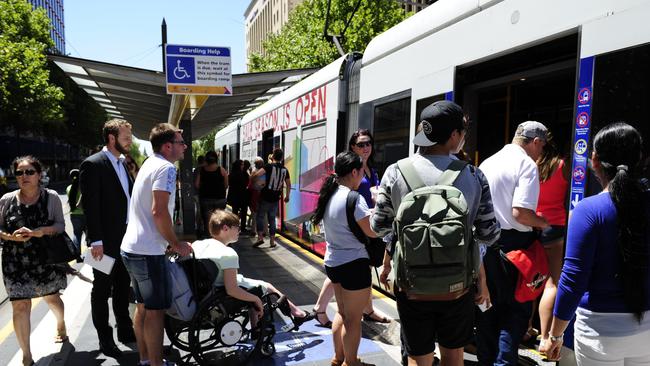
2. NORTH TCE PEDESTRIAN CROSSING AREAS
The angle of the ramps on to the road is steep and the condition of the tactile pavers can present an uneven surface, which can cause someone using a wheelchair to struggle.
“One of the sections of the tactile pathway indicator (bumpy tiles) had fallen off and it caused an uneven surface which could cause a wheelchair-user to tip over,” she said.
“And the angle of the (decline on to the road) is quite steep – it can be quite difficult (to navigate).”
3. CENTRAL STATION TOILET
The toilet does not have an assistance button to call for help so a person could remain locked in if they fell out of a wheelchair.
“There’s no emergency button to call for assistance if you were to fall on the floor.
“It means you could be stuck in here overnight. Also, it’s common for these toilets to be used by people getting changed, taking drugs or even having sex.”
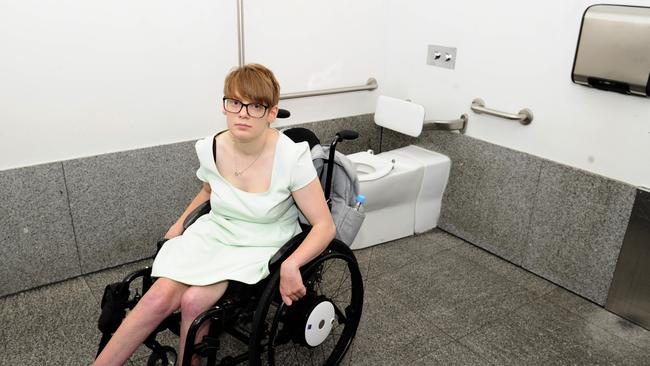
4. CITY WAYFINDING SIGNAGE
The print on the newly installed signs around the city is too small to read for people with poor eyesight and at a bad angle for those in a wheelchair. There is no braille component of the sign so the information cannot be transmitted to people with serious sight conditions.
“These signs aren’t designed for easy use if you have a vision impairment or are a wheelchair user. The small writing and the angles when you try to read them aren’t really good enough.”
5. OUTDOOR DINING ON KING WILLIAM ST
People with vision impairments struggle to navigate King William St because many are taught to use an assistance cane from the left side of the body by tapping against building walls. The setup of outdoor dining areas can cause problems for people trying to find nearby bus stops as they jut out on to the pavement.
“It can be difficult for people to make it to their bus stop because they are used to finding the way from the left side of their body and if a restaurant’s outdoor dining (area) suddenly starts it can cause a lot of problems.”
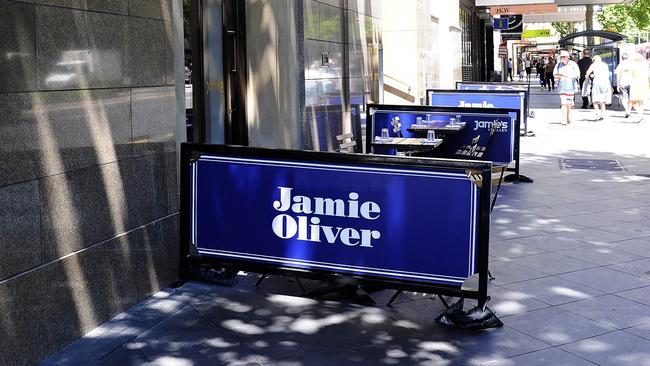
6. PARLIAMENT HOUSE
Parliament House only has one accessible entrance to the side of the main steps near Old Parliament House. During a recent renovation the accessible entrance was blocked off for almost two years, forcing entry through the car park.
“We should be aiming for the principle of universal design where it ensures buildings or places are accessible and usable by everyone. There should be a main entrance that provides access for wheelchair-users or someone who is ambulant. (The main entrance) is isolating and it can make people feel unwelcome.”

7. HEIGHT OF CITY BUILDINGS’ INTERCOM SYSTEMS
Security systems for city buildings often are placed extremely high for people using a wheelchair and it makes it hard to reach to request access. “Many buildings are not designed to ensure wheelchair-users can access (the intercom) and some are also very narrow to get through. It can make it extremely difficult to get in to a number of buildings in the city, which means I miss out.”

8. KING WILLIAM ST HERITAGE BUILDINGS
Many of the buildings on King William St can only be accessed by using the stairs which prevents people in wheelchairs, or those with mobility issues from entering.
“I understand it can cost money for businesses to retrofit (ramps or other infrastructure) but people should not be treated like second class citizens because they use a wheelchair or mobility device. Unfortunately many businesses don’t see the benefits in making their shops more accessible because they wouldn’t view me as a potential customer.”
9. ACCESSIBLE PARKING
Some accessible car parks in the city and North Adelaide do not meet disability standards – such as not being wide enough – and others revert to short-time parking when not being used by permit holders.
“Adelaide City Council allows a number of (disabled) car parks around the city and inner areas to revert to short time parking or other (rules) depending on the time of day because they have been lobbied by local shopkeepers. But it gets people in the habit of thinking they can park in there if they are only going to be a few minutes. There aren’t enough (disabled) parking spaces as it is, without the ones we have being used by shoppers.”
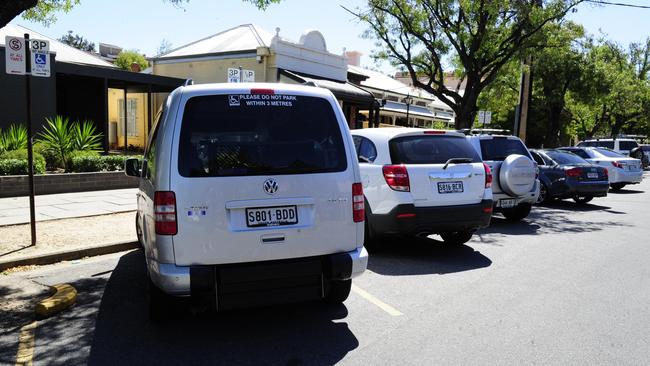
10. RESTAURANTS AND PUBS ON MELBOURNE ST, NORTH ADELAIDE
Many buildings in the area have a small step at the entrance. Despite appearing negligible in size, it often prevents people in a wheelchair or mobility device from entering – particularly without assistance.
“Even though many of the steps are very small they are make it impossible to enter (the buildings) without assistance. The cost of retrofitting these buildings would be far less than employing a permanent disability support worker . I shouldn’t be required to have assistance to get into a shop to be able to spend my money and contribute to the economy.”
